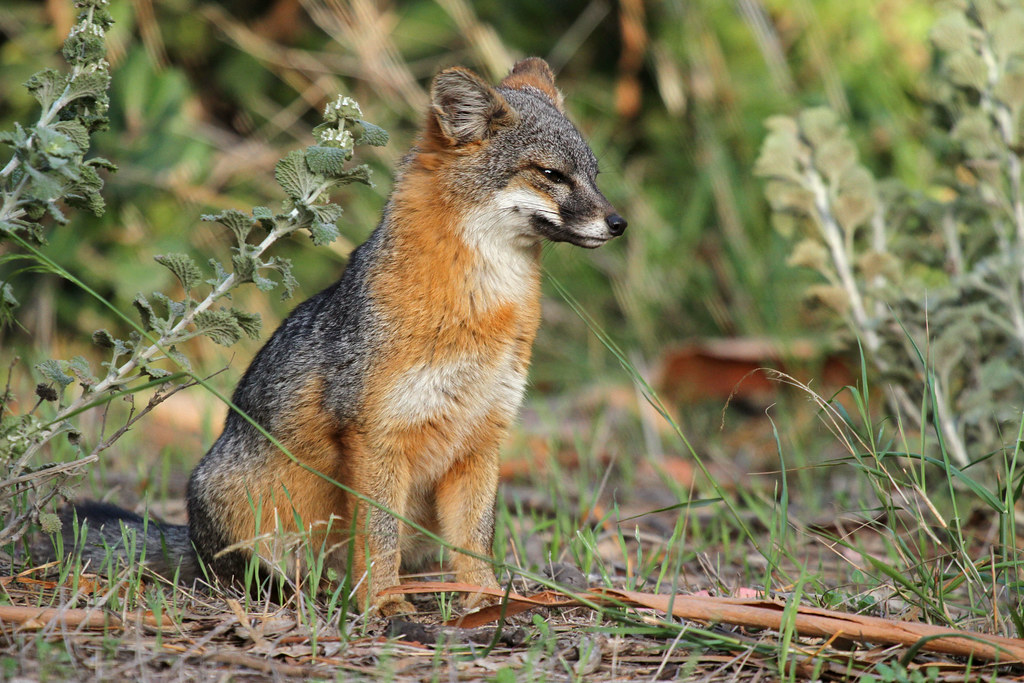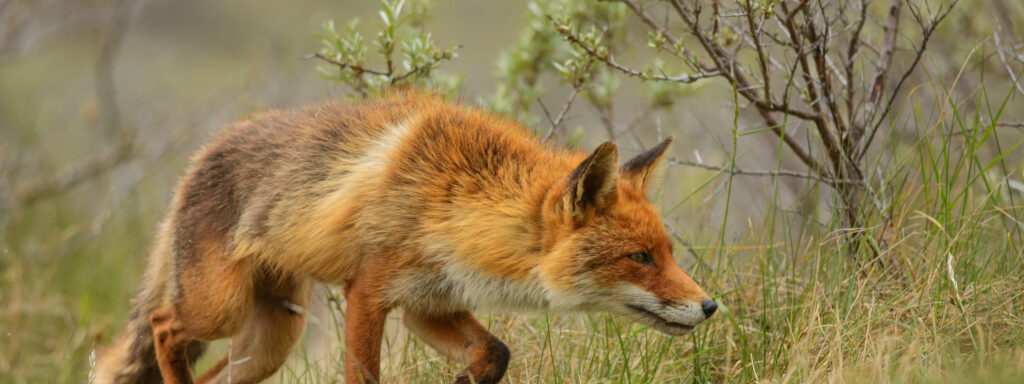Table of Contents
ToggleIntroduction
Foxes Canine Or Feline: Foxes, enigmatic creatures that captivate the imagination with their cunning and playful demeanor, belong to the Canidae family, making them distant relatives of our loyal canine companions. However, despite their shared lineage, foxes possess a distinct charm that often blurs the line between the canine and feline worlds. Known for their bushy tails, pointed ears, and keen intelligence, these adaptable mammals have carved a niche for themselves in both folklore and the natural world. In this exploration, we delve into the fascinating realm of foxes, unraveling the unique blend of canine and feline traits that define these enchanting creatures.

Canine Traits of Foxes:
Social Structure and Familial Bonds:
Cooperative behaviors, such as group hunting and the sharing of resources, mark the familial bonds among foxes. In times of scarcity, the family unit collaborates to secure food, showcasing a level of teamwork and social organization reminiscent of canines. These communal efforts contribute not only to the survival of individual members but also to the overall resilience of the fox family in the face of environmental challenges.
Foxes exhibit intriguing social structures that parallel those found in domestic dogs. Unlike their solitary feline counterparts, many fox species, such as the red fox, are known to form tight-knit family units. Typically, a fox family consists of a monogamous pair—comprising an alpha male and an alpha female—and their offspring. This familial cohesion extends beyond the mating season, with both parents actively participating in the upbringing and care of their young.
Playful Behaviors Reminiscent of Domestic Dogs:
Foxes share a penchant for playfulness that is undeniably reminiscent of domestic dogs. Observing fox kits frolicking and engaging in playful antics mirrors the exuberant behavior of puppies. Play serves a crucial role in the development of young foxes, helping them hone essential skills such as hunting techniques, agility, and communication.
Playful interactions within fox families also contribute to the strengthening of social bonds. These engaging behaviors involve activities such as chasing, pouncing, and mock fighting, echoing the playfulness observed in domestic dogs. The lighthearted moments not only enhance the overall well-being of the foxes but also foster a sense of camaraderie within the family unit.
Physical Characteristics Shared with Canines:
Foxes exhibit distinct physical characteristics that align them with their canine relatives. One notable feature is their pointed ears, a trait commonly associated with canids. These ears serve a dual purpose, enhancing their sense of hearing and aiding in the detection of prey or potential threats. The acute auditory senses of foxes contribute to their success as both predators and scavengers in diverse ecosystems.
Feline Traits of Foxes:

Solitary Hunting Habits and Stealthy Nature:
While foxes share notable canine traits, they also exhibit distinct feline characteristics, especially in their hunting behaviors. Unlike the pack-oriented approach of canines, many fox species, such as the elusive fennec fox or the swift gray fox, display a more solitary hunting strategy. This feline-like behavior involves a stealthy and solitary approach to stalking and capturing prey.
Foxes, with their keen senses of sight and hearing, rely on stealth and cunning when pursuing their quarry. They often utilize their agile bodies to navigate the terrain quietly, displaying a hunting prowess reminiscent of felines. Their solitary nature during the hunt allows them to focus on individual targets with a precision that mirrors the calculated approach of cats.
Agile and Graceful Movements Similar to Cats:
Foxes showcase an impressive level of agility and grace in their movements, drawing parallels with the fluid and lithe motions of domestic cats. Their ability to navigate through dense vegetation, leap over obstacles, and execute precise maneuvers reflects a feline-like dexterity. Whether scaling rocky landscapes or effortlessly leaping to catch prey, foxes exhibit a combination of strength and elegance that aligns with the graceful movements associated with cats.
This feline-like agility is particularly evident in hunting scenarios where foxes display quick bursts of speed, sudden changes in direction, and the ability to climb trees with finesse. The combination of these traits allows foxes to access a diverse range of environments and successfully adapt their hunting strategies to various landscapes.
Self-Grooming Behaviors:
Foxes share a behavioral trait with felines that goes beyond hunting: the practice of self-grooming. Like cats, foxes are meticulous groomers, employing their tongues and paws to clean their fur and maintain personal hygiene. This self-grooming behavior is essential for removing parasites, keeping the fur in optimal condition, and contributing to overall health.
The fastidious grooming routines of foxes not only serve practical purposes but also reflect a certain level of sophistication and attention to personal care. This feline-like behavior further blurs the distinction between foxes and their canine counterparts, highlighting the diversity of traits that these adaptable creatures possess.
The Blurred Lines:
Examples of Behaviors that Defy Clear Canine or Feline Classification:
Foxes, with their fascinating blend of traits, often exhibit behaviors that defy clear categorization as either purely canine or feline. One notable example is their vocal repertoire, which encompasses a diverse range of sounds, from high-pitched barks and yips resembling canines to eerie screams reminiscent of felines. This vocal flexibility allows foxes to communicate effectively with both family members and potential mates, showcasing a fusion of communication styles from both sides of their lineage.
Another intriguing behavior that blurs the lines is the dual approach to territory marking. While foxes, like canines, use scent marking to delineate their territories, they also engage in urine marking with a precision and strategic intent that echoes the territorial behaviors of feline species. This multifaceted approach to communication and territory maintenance highlights the intricate nature of fox behavior that transcends simple classification.
Adaptability to Different Environments:
Foxes are renowned for their adaptability to a wide array of environments, showcasing a versatility that is not limited to either the canine or feline realm. From arid deserts to dense forests and urban landscapes, foxes have successfully carved out niches in diverse ecosystems. This adaptability is underscored by their diet, which can include anything from small mammals and birds (canine hunting traits) to insects and fruits (feline scavenging habits).
Their ability to thrive in varied habitats is not only a testament to their resourcefulness but also reflects a balance between the characteristics inherited from their canine and feline ancestors. Foxes have evolved to exploit opportunities and navigate challenges in a way that transcends the constraints of a strictly defined ecological niche.

Conclusion
In the intricate tapestry of the natural world, foxes emerge as captivating enigmas that defy easy categorization as either purely canine or feline. Throughout our exploration, we have witnessed their uncanny ability to blend the characteristics of both worlds, creating a unique identity that challenges conventional notions. From their familial bonds and playful antics reminiscent of canines to their stealthy, solitary hunting habits that echo feline instincts, foxes invite us to appreciate the nuanced beauty of biodiversity.







